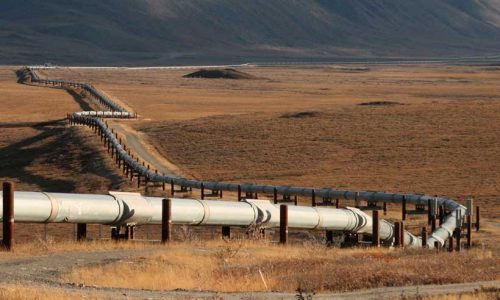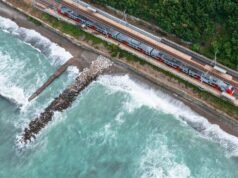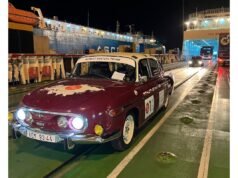Analysis of the causes of the recent military confrontation on the Armenian-Azerbaijani border reveals an interesting panorama. No such sharp military confrontation or casualties were reported along the border of these two South Caucasus countries during the 30-year-long Nagorno-Karabakh conflict.
Until July 12 this year, the main place of military confrontation between the two countries was Nagorno-Karabakh and 7 adjacent regions, which are recognized by international law as the territory of Azerbaijan and occupied by the Armenian Armed Forces. The last such sharp military confrontation between two countries took place in April 2016 and is engraved in history as a four-day April war.Since then, there has been no such confrontation between Armenia and Azerbaijan with using of heavy artillery and air force.
This time the clash took place in the Tovuz region of Azerbaijan, 300 kilometers from Nagorno-Karabakh.According to the Azerbaijani Defense Ministry, starting from noon on July 12, Armenian Armed Forces violated the ceasefire in the Tovuz region of the Azerbaijani-Armenian border and fired on civilian and military positions using artillery. As a result, 12 Azerbaijani servicemen and 1 civilian were killed. The attack was prevented only after retaliatory strikes, but the ceasefire along the border has not yet been fully restored. The co-chairs of the OSCE Minsk Group (USA, Russia, France) which mediate in the peaceful settlement of the Nagorno-Karabakh conflict, the European Union, as well as the international community call for a ceasefire. However, the possibility of resuming the ceasefire soon is not yet on the horizon.
In this case, one of the main points that raises the question is why the fighting took place not in the direction of Nagorno-Karabakh, but on the Armenian-Azerbaijani border. The point is that the region where is situated the Tovuz region of Azerbaijan, attacked by the Armenian Armed Forces, ihas a strategic importance. The Baku-Tbilisi-Ceyhan pipeline, which carries crude oil to Europe, the South Caucasus Pipeline, which is the beginning point of the Southern Gas Corridor, including the Trans-Adriatic Pipeline (TAP) to Italy, and the Baku-Tbilisi-Kars railway, which laid the foundation for the revitalization of the Silk Road pass from Tovuz region also. The military provocations in Tovuz not only destabilize the region, but also hinder the operation of these important projects, which provide access to alternative energy sources for Europe.
Elshad Nasirov, Vice President for Investments and Marketing of the State Oil Company of Azerbaijan (SOCAR), also voices interesting views on this issue: “In my opinion, it is not accidental that Armenia launched a military operation against Azerbaijan three months before the start of Azerbaijani gas supplies to Europe. Military operations are realised on the Armenian-Azerbaijani border, not in Nagorno-Karabakh, which is recognized by all international organizations and countries as the territory of Azerbaijan. All the infrastructure that brings Azerbaijan’s energy resources to Western countries and the world market is located in this region. Baku-Tbilisi-Ceyhan, Southern Gas Corridor, Baku-Supsa pipeline, Baku-Tbilisi-Kars railway, Baku-Tbilisi highway pass through the direct view and proximity of the place where the Armenian military operations began. I invite our colleagues from Washington, Europe and elsewhere to think about how sensitive the Ganja Corridor and the Trans-Caspian region are and how to ensure the military and physical security of Europe’s energy security corridor”.
At present, European countries are among the main consumers of Azerbaijani oil. Italy is Azerbaijan’s main trading partner in the sale of this oil on world markets. In the autumn of this year, Europe will also start consuming Azerbaijani gas. For this purpose, a 3,500-kilometer-long Southern Gas Corridor pipeline is being built and is nearing completion. Its last ring, the Trans-Adriatic Pipeline to the Italian shores of the Adriatic Sea, is 97 percent completed. TAP is the European section of the Southern Gas Corridor, enhancing Europe’s energy security and contributing to decarbonisation and the diversification of gas supplies.
In October 2020, the pipeline will start transporting Azerbaijani gas to Europe. Thus, Europe will start importing natural gas from a completely new source. The attack on Azerbaijan’s Tovuz region shortly before this important event is also considered an attack on Europe’s energy security. Azerbaijan believes that one of the main goals of Armenia’s latest provocations is to destabilize the region and hinder the operating of these important projects, which will allow Europe to access alternative energy sources and new markets.
There is another dangerous reason for Armenia’s bombing of the border areas densely populated by the Azerbaijani population. The another aim of the provocation and tension in the direction of Tovuz region of the state border between the two countries is to involve third parties to the conflict.We are talking about Russia and member countries of the Collective Security Treaty Organization (CSTO). Azerbaijan’s Ambassador to Russia Polad Bulbuloglu says in this regard: “There is no doubt, this was done to involve the CSTO member countries and, first of all, Russia into the conflict. Because it’s clear that Azerbaijan has bilateral partnership relations, including economic ones with all members of the CSTO. The local task is to raise the CSTO, primarily Russia, the global task is to create another hotbed of tension along the perimeter of Russia, which would create certain concerns”.
Assistant to Azerbaijan’s President, Head of Foreign Policy Affairs Department of the Presidential Administration Hikmat Hajiyev agrees üith this opinion. He says Armenia seeks to involve military-political organizations, member of which it is, into the Karabakh conflict, through military provocations, and avoid responsibility for occupation and aggression against Azerbaijan.
However, Armenia’s efforts in this direction did not yield results.Even though Head Secretary of the organization initially said it would hold an emergency meeting on the issue, but later postponed it indefinitely period.However, Armenia still does not give up its attempts to involve Russia and the organization in the conflict. In this case, Turkey the member of NATO openly supports Azerbaijan. In this context Armenia is trying to confront NATO and Russia in the Caucasus by exaggerating the Turkish factor. But this time, Russia is cautious.
Nevertheless, it is important to resolve the Nagorno-Karabakh conflict as soon as possible within the framework of international law in order to prevent the dangerous development of events. It should be reminded that, four resolutions of the UN Security Council demanding unconditional withdrawal of the Armenian troops from the occupied territories.Armenia in 1990 years aggressively occupied the Nagorno-Karabakh region and the adjacent seven districts of Azerbaijan. The conflict between the two South Caucasus countries began in 1988 when Armenia made territorial claims against Azerbaijan and as a result of the ensuing war, Armenian armed forces occupied 20 percent of Azerbaijan. Over a million Azerbaijanis living in these territories were subjected to ethnic cleansing and were expelled from their homes.The 1994 ceasefire agreement was followed by peace negotiations. But Aprel war in 2016 and border clash in July of this year shows the conflict may ignite in any time on military ground.







